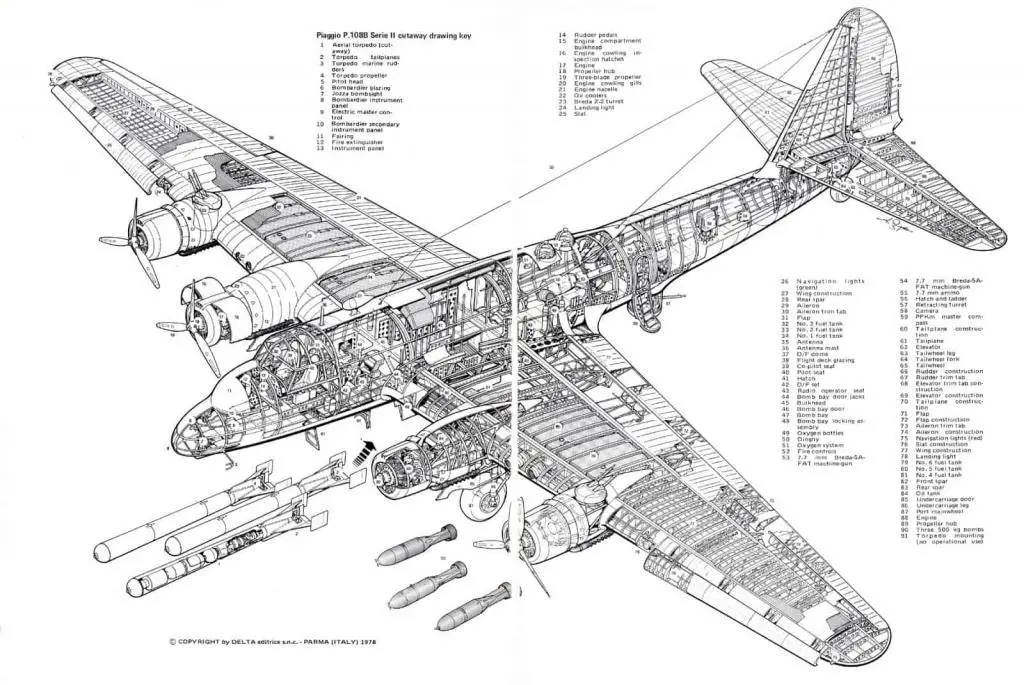Background on the Piaggio P.108
The Piaggio P.108 was the only heavy four-engine bomber to see service with the Regia Aeronautica during World War Two. Too few were built to play a significant role in the war. The bomber version was identified as the Piaggio P108B and Piaggio built just 24 units. The P.108 was an all-metal, low-wing monoplane with a retractable undercarriage. The Piaggio P.108 powerplant consisted of four 1,350 hp Piaggio P.XII radial engines. The Piaggio P.108 was an expensive aircraft to build and cost 3x as much as the SM.79 Sparviero.

The Piaggio P108 was an impressive Italian Heavy Bomber with many technological innovations.
The first prototype was completed in October 1939 and contained very advanced defensive armament for its day. The aircraft armament included two 7.7 mm machine waist guns, a 12.7 mm machine gun in the lower turret and a similar weapon in the nose turret. The P108 also had some innovative technology such as two remotely-controlled twin gun turrets in the outer engine nacelles. The Boeing B-29 Superfortress was the first Allied bomber with a similar armament but developed four years later. The bomb load of the Piaggio comprised of 7,700 lbs housed internally in the bomb bay.
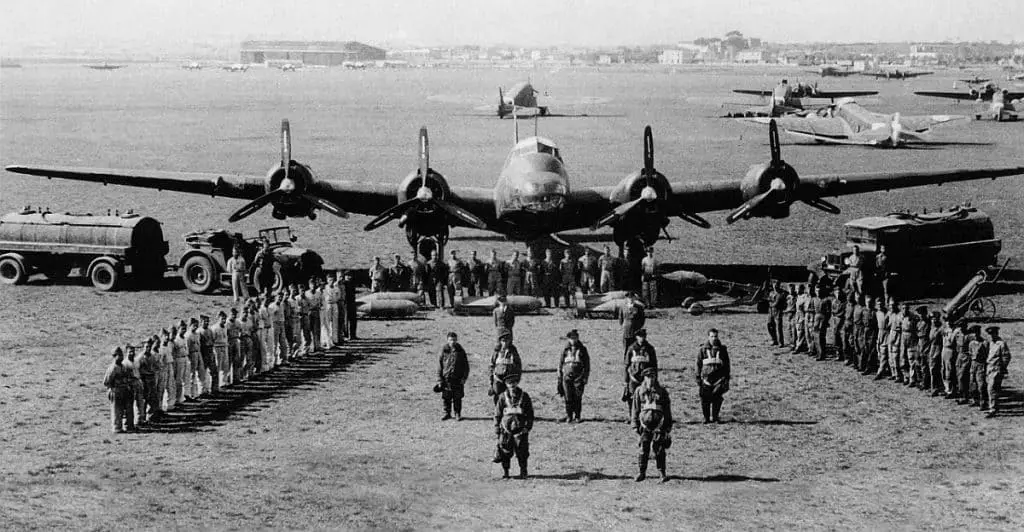
An impressive image of the Piaggio P.108 and 274th Long-Range Bombardment Group.
The P.108B in Action
The only unit of the Regia Aeronautica ever to fly the P.108B was the 274th Long-Range Bombardment Group (274a Squadriglia). This unit formed in May 1941 after the first aircraft that came off the assembly lines. The crew training lasted far longer than anticipated and in June 1942 the 274th became operational. The P.108B conducted bombing sorties in Gibraltar, Bône, Algiers, Blinda, Philippeville, Maison Blanche, Oran and Sicily.
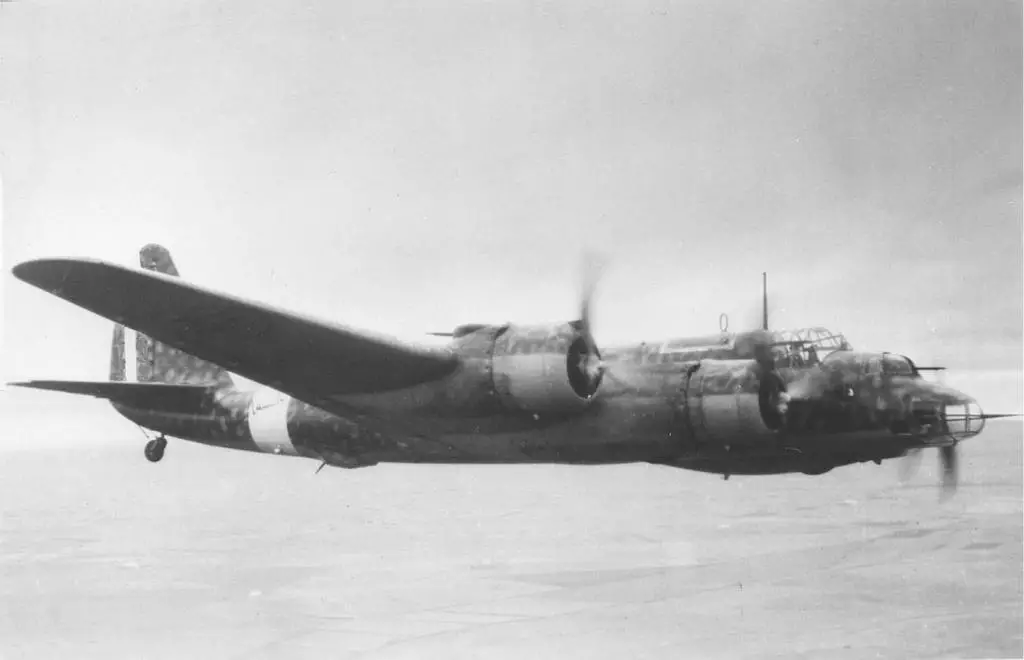
The Piaggio P108B in the air.
Piaggio P108 Variants
The Piaggio P108 had four variants produced.
- Piaggio P.108A (Artiglieri): The P108A had an anti-shipping mission. Armament included a 102 mm cannon in the nose and up to three torpedos. Piaggio built one P108A.
- Piaggio P.108B (Bombardiere): Piaggio manufactured 24 of these Heavy Bombers. See the specifications below.
- Piaggio P.108C (Civile): Piaggio manufactured six of these aircraft. This variant had a wider fuselage and designed to carry 32 passengers.
- Piaggio P.108T (Transporto): This variant could transport two dismantled Macchi C.200s, 60 soldiers, eight torpedoes or 13 tons of cargo. A little over 12 were manufactured.
The latter two versions were capable of transporting passengers or freight. The Regia Aeronautica rarely used the P108C and P108T aircraft. The main would become the German Luftwaffe.
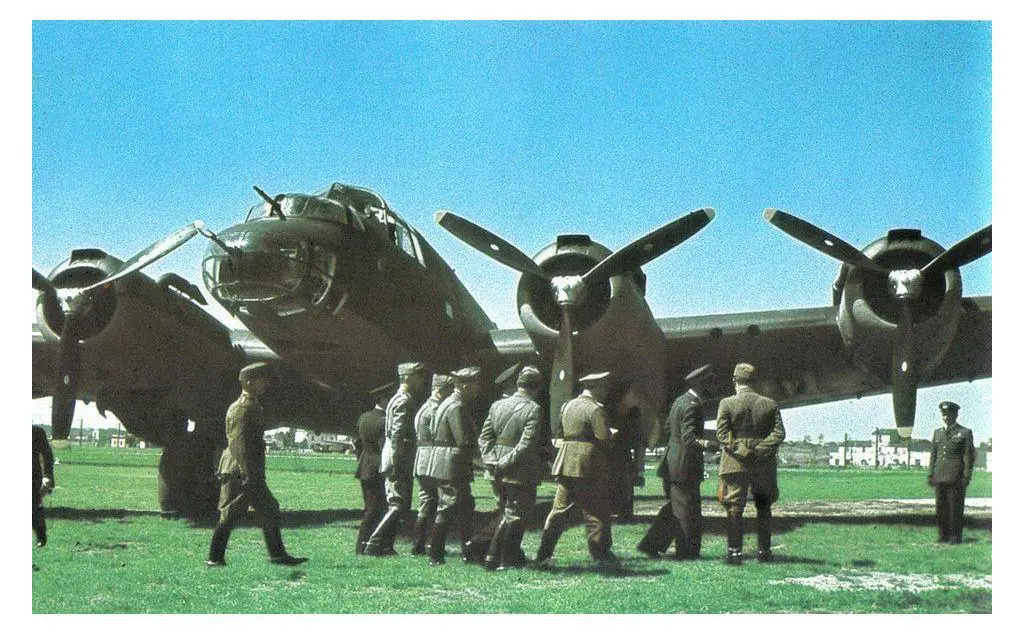
A color photograph of the P108 Heavy Bomber.
After the Italian armistice in September 1943, the Luftwaffe captured all fifteen P.108Cs and P.108Ts built. The aircraft joined the Luftlotte 2 and used at the Russian front. They were very reliable and also performed well in the evacuation of the Crimea in 1944.
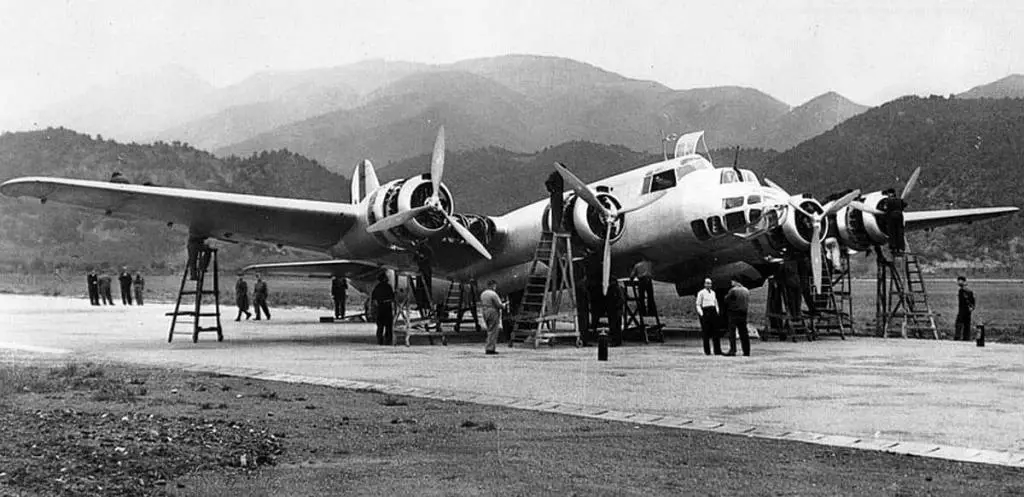
The Piaggio P108 was a complex design and difficult to build in high numbers.
Bruno Mussolini
On 07 August 1941, Commander in the 274a Squadriglia, Bruno Mussolini, son of Benito Mussolini, died when his Piaggio P.108B crashed in Pisa, Italy. The aircraft was flying too low and hit a dwelling. Two other crewmembers perished with him.
Specifications
Other resources
The Concise Guide to Axis Aircraft of World War II: The Warplanes of Germany, Italy, and Japan During World War II
Courage Alone: The Italian Air Force 1940-1943
Italian Civil And Military Aircraft 1930-1945
Complete Book of World War II Combat Aircraft (Documents of History)
In the Skies of Europe: Air Forces Allied to the Luftwaffe 1939-1945
